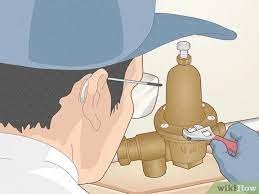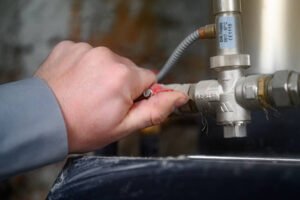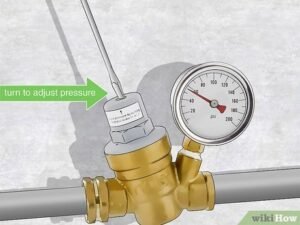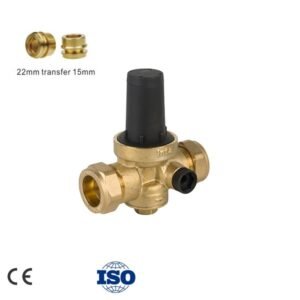In the realm of plumbing and hydraulic systems, the pressure reducing valve (PRV) emerges as a pivotal component, playing a crucial role in managing and controlling the pressure of fluids to ensure safe and efficient operation. These valves are essential in both residential settings, where they safeguard home plumbing systems from high incoming water pressure, and in various industrial applications, where they regulate the flow and pressure of gases and liquids. Understanding the operational mechanics, types, benefits, and maintenance of a pressure reducing valve can provide insights into its significance and functionality within water supply systems and beyond.
The Principle of Operation
A pressure reducing valve operates on a straightforward principle: it automatically reduces a higher inlet pressure to a lower, regulated outlet pressure, regardless of changes in the incoming pressure or flow rate. The core components of a PRV include a valve seat, a valve disk, a spring, and a diaphragm or piston, which work together to modulate the pressure of the fluid passing through it.
When water or another fluid enters the valve, it encounters the valve disk, which is initially in a closed or partially closed position, regulated by the spring. The incoming pressure exerts force on the diaphragm or piston connected to the valve disk. As the inlet pressure exceeds a preset value determined by the spring’s tension, the diaphragm compresses the spring, causing the valve disk to open and allow fluid flow. The flow continues until the outlet pressure rises enough to push the diaphragm or piston against the spring force, narrowing or closing the valve disk opening, and thus reducing the flow rate until the desired outlet pressure is maintained.
Types of Pressure Reducing Valves
Pressure reducing valves come in various designs and sizes, tailored to specific applications and fluids, including water, steam, air, and oil. The most common types include:
- Direct-acting valves: Compact and requiring no external sensing line, these are ideal for low to medium flow rates.
- Pilot-operated valves: These use a smaller auxiliary valve to control the main valve, suitable for high flow rates and providing greater accuracy in pressure control.
- Angle-type valves: Designed to change the direction of flow, these are used in steam and compressed air systems.
Benefits of Using Pressure Reducing Valves
The implementation of pressure reducing valves in plumbing and hydraulic systems offers numerous advantages:
- Protection of Plumbing Fixtures: By controlling pressure, PRVs prevent damage to pipes, joints, and appliances caused by excessive pressure.
- Water Conservation: Lowering water pressure reduces flow rates from taps and showers, contributing to significant water savings.
- Energy Efficiency: For hot water systems, PRVs can reduce energy consumption by decreasing the demand on water heaters.
- Noise Reduction: PRVs help eliminate water hammer and other noise generated by high-pressure flow within pipes.
- Cost Savings: By mitigating leaks and reducing water and energy usage, PRVs can lead to lower utility bills and maintenance costs.
Installation and Maintenance
Proper installation and regular maintenance are key to ensuring the effective performance and longevity of a pressure reducing valve. Installation should ideally be performed by professional plumbers, following these general steps:
- Location: Install the PRV where the main water line enters the building, ensuring easy access for maintenance.
- Orientation: Align the valve according to the manufacturer’s instructions, taking note of the direction of flow indicated on the valve body.
- Pressure Adjustment: Once installed, adjust the valve to the desired outlet pressure, typically between 40 to 60 psi for residential systems.
Maintenance involves periodic inspection for signs of wear, leaks, or corrosion, and checking the outlet pressure with a gauge. It’s also recommended to clean or replace internal components, such as the diaphragm and spring, as per the manufacturer’s guidelines.
Troubleshooting Common Issues
Over time, PRVs may encounter issues affecting their performance, including:
- No Pressure Reduction: This may indicate a jammed valve disk or a broken spring, necessitating cleaning or parts replacement.
- Excessive Noise: Vibrations or noise can be caused by debris in the valve or improper sizing, requiring cleaning or adjustment.
- Leaks: Worn seals or diaphragms can lead to leaks, which should be promptly replaced to prevent water damage.
Conclusion
The pressure reducing valve is an indispensable element within plumbing and hydraulic systems, designed to regulate fluid pressure to optimal levels, thereby ensuring the safety, efficiency, and longevity of these systems. By understanding the principles of how PRVs work, recognizing their benefits, and adhering to proper installation and maintenance practices, homeowners and professionals alike can ensure these devices function effectively, providing peace of mind and contributing to the sustainable use of resources. As technology advances, the development of more sophisticated and efficient pressure reducing valves continues, promising enhanced performance and reliability for diverse applications.






